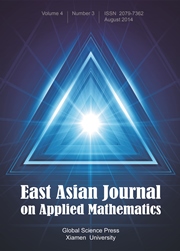Crossref Citations
This article has been cited by the following publications. This list is generated based on data provided by Crossref.
Wang, Zhibo
Cen, Dakang
and
Mo, Yan
2021.
Sharp error estimate of a compact L1-ADI scheme for the two-dimensional time-fractional integro-differential equation with singular kernels.
Applied Numerical Mathematics,
Vol. 159,
Issue. ,
p.
190.


